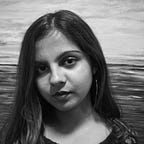Hindi Cinema and the Bechdel Test: Do Hindi Movies Pass the Test?
Movies play a huge role in shaping people’s mindsets in significant ways. Its opinion on female empowerment and representation too can have a huge influence on people.
It has been long debated that women’s role in Hindi cinema is counteractive to men’s roles in cinema. Most of the movies have had men’s characters being glorified as the most important, while women’s characters are portrayed as the romantic interests in lieu of men. This can turn out to be very problematic and women are depicted to be highly sexualized and objectified. While women-centric characters have been depicted on-screen recently, the representation still remains very skewed. The question is not about having more feminist movies but about having more screen space allotted to women characters.
Origin of Bechel Test:
Bechdel Test was devised by Alison Bechdel. She is an American Cartoonist who devised the Bechdel Test (alternatively known as the Bechdel-Wallace Test). It acts as a litmus test for women's representation in movies. It first appeared in her comic “Dykes to Watch Out For” in 1985. This test has been widely used to test female representation in Hollywood movies.
What is Bechdel Test:
1. There should be at least two (named and defined) female characters in the movie
2. These female characters, at some point, should talk to each other
3. The female characters should have a conversation that is not centered around men.
How does Bollywood Fare:
Despite the bar being set so low, so very few movies pass the test. For instance, even though they were put across as women-centric films, Tanu Weds Manu Returns, Highway, Revolver Rani, and Bobby Jasoos do not pass the Bechdel Test. Movies like Raazi, Race 3, Padmavat, and Badhai Ho pass the test.
Women-centric and parallel cinema has fared relatively better in recent years, depicting men and women’s same-sex conversations more unconventionally of their genders. Nevertheless, overall men were clearly given a better deal across the genres, at least dialogically, with male-male conversations occurring almost thrice as many times than female-female conversations, and non-stereotypically to a greater degree than women’s conversations.
